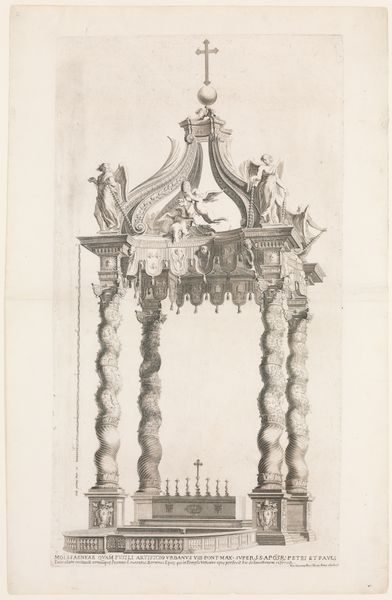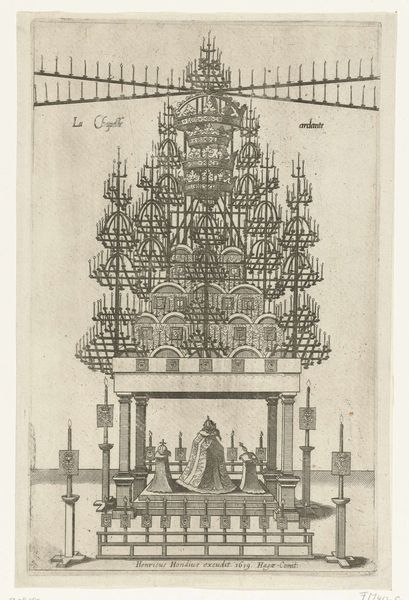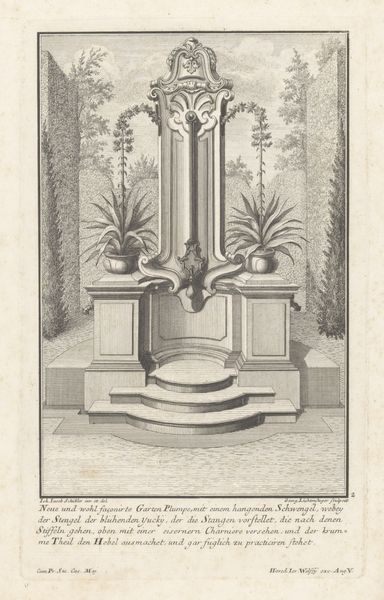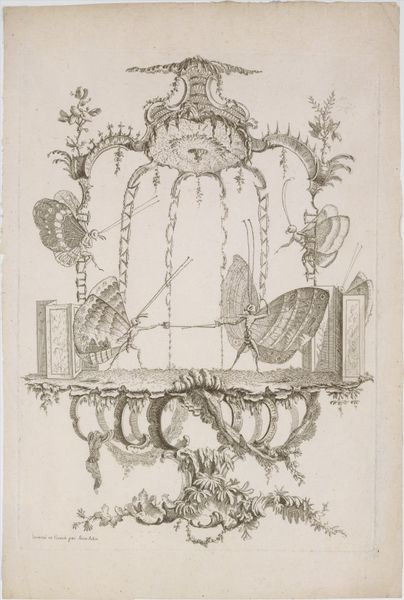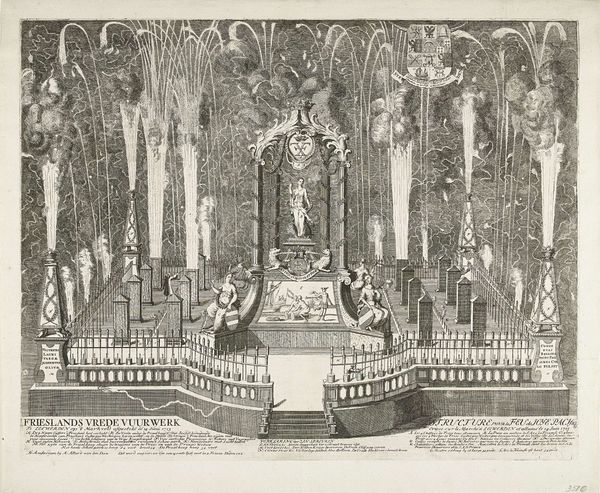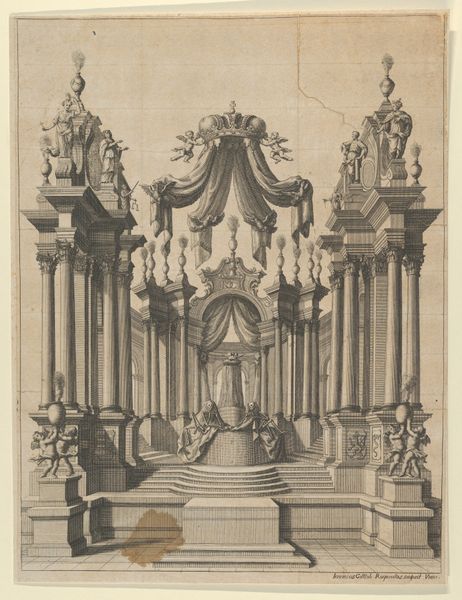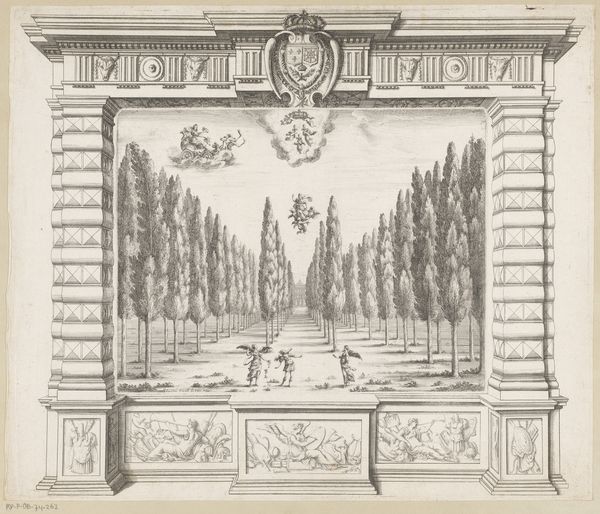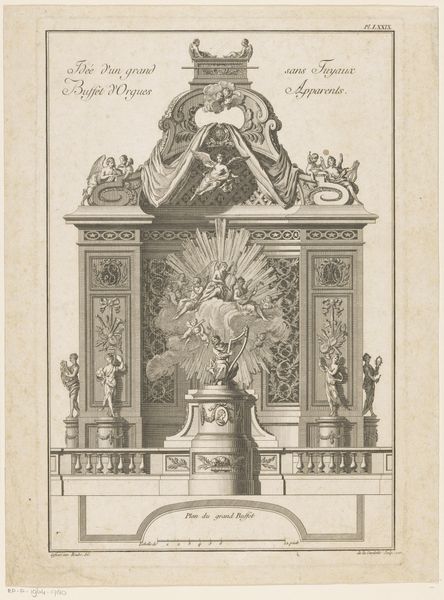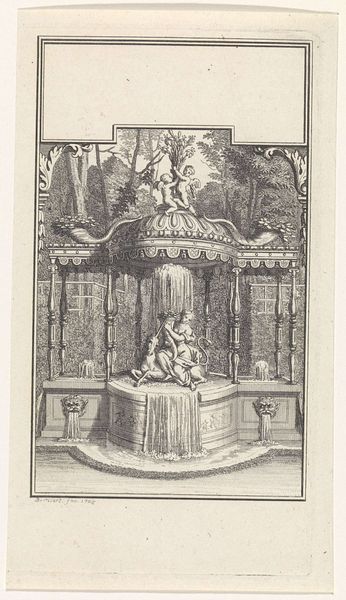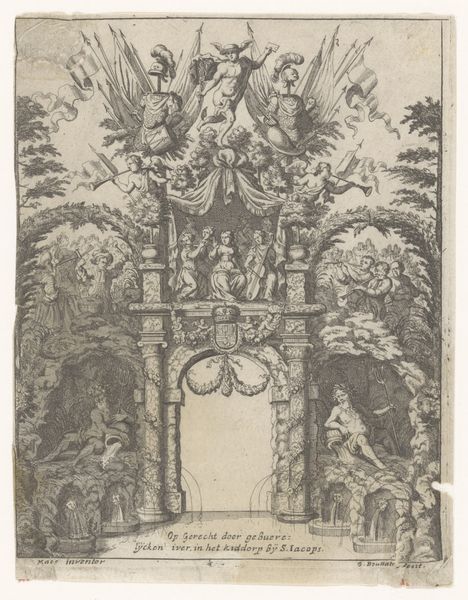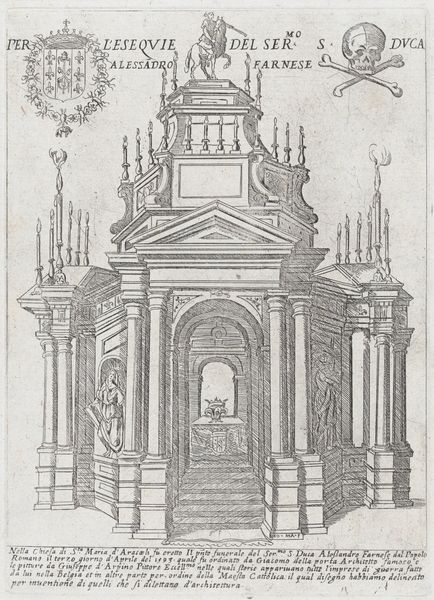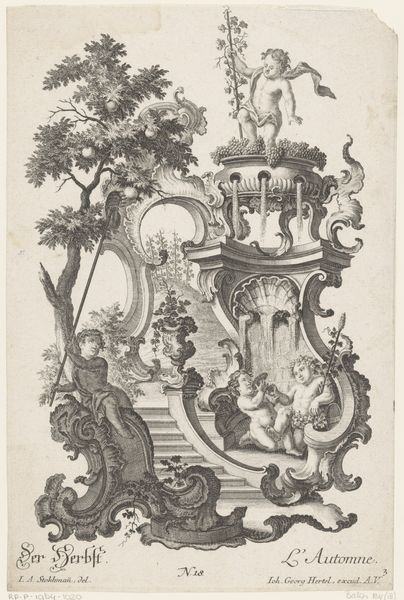
Catafalque for Marchese Bartolomeo Ruspoli, S. Maria in Vallicella, Rome, September 21, 1681 1681
0:00
0:00
drawing, print, engraving, architecture
#
drawing
#
baroque
# print
#
history-painting
#
engraving
#
architecture
Dimensions: Sheet (Trimmed): 16 3/4 × 12 13/16 in. (42.5 × 32.6 cm)
Copyright: Public Domain
Curator: This intricate engraving depicts the catafalque erected for Marchese Bartolomeo Ruspoli in Rome, back in 1681. Editor: It’s certainly striking. My first impression is somber, even theatrical, with those towering candle arrangements. The composition feels meticulously planned. Curator: Planned indeed! These catafalques, often temporary architectural structures, were elaborate displays of power and mourning. Think of them as public performances, visually reinforcing the status of the deceased and their family within society. Editor: It’s interesting to consider how these structures function as propaganda, solidifying social hierarchies. It goes beyond personal grief, doesn’t it? More like a curated display of dominance for public consumption. Curator: Precisely. Note the details in the engraving. We see the dense ornamentation on the base, perhaps allegorical figures that speak to Ruspoli's virtues and achievements. Editor: It is interesting that they chose to show them this way. Who gets to decide the representation of this man's achievements? I bet everyday workers were far less lavishly honored. Curator: Such displays also bolstered the artists and artisans involved. Creating these temporary monuments was an opportunity to showcase their skills, further solidifying their position within the art world, benefiting from wealthy commissions. Editor: That makes you wonder who commissioned the piece? This artwork creates more visibility to those artists as much as it shows mourning for the deceased. You could say, in many respects, that death is really for the living. Curator: Absolutely. These funerary rituals served multiple purposes. It also underscores the Church's power, which benefits institutionally. Editor: This makes me wonder if those receiving aid in this particular city felt a tension between these over the top funerals for the wealthy compared to the community struggles. Curator: It's a compelling thought that challenges our interpretation. I'll never look at this piece quite the same. Editor: And seeing it this way highlights not just artistic accomplishment but also power structures at work.
Comments
No comments
Be the first to comment and join the conversation on the ultimate creative platform.
